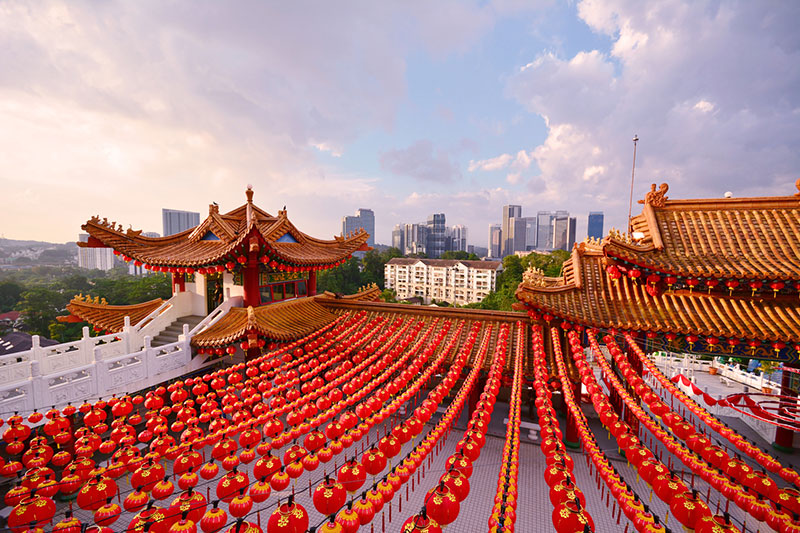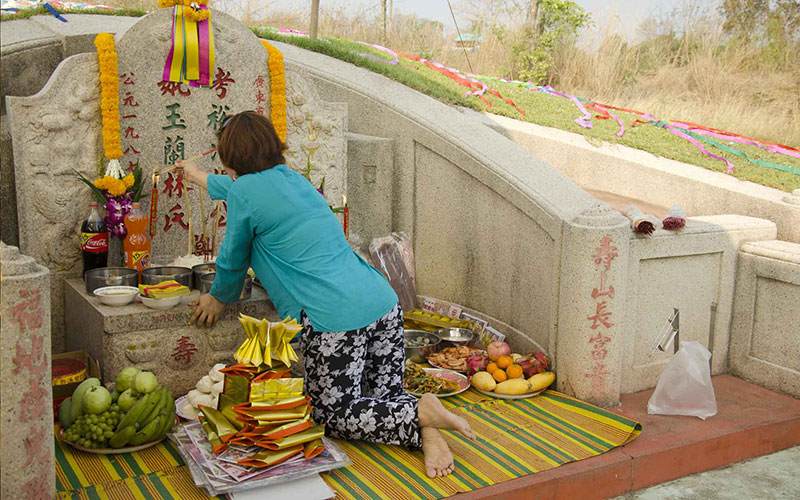
The Spring Festival in China welcomes the new year. For the Chinese, it is the most important family festival of the year, similar in significance to Christmas here. The celebrations extend until the 15th day of the first month according to the lunar calendar, known as the Lantern Festival. On the last day of the old year, each family first prepares a traditional feast together, which varies from region to region.
In northern China, filled dumplings called "Jiaozi" are an essential part. The traditional curved shape of Jiaozi symbolizes wealth, resembling silver ingots that were used as currency centuries ago. Normally, Jiaozi are filled with meat or vegetables. However, during the Spring Festival, some of the dumplings are filled with surprises such as sugar paste, candy, or even a coin. Whoever gets one of these Jiaozi during the meal can hope for a particularly sweet life or wealth. By tradition, not all Jiaozi are eaten - the remaining ones ensure that the family always has enough to eat in the coming year.
In the south, they make "Niangao," small New Year's cakes made from sticky rice.
The Lantern Festival is celebrated on the first full moon night after the Spring Festival. Traditionally, small sticky rice balls called Yuanxiao are eaten during this festival, symbolizing family unity. The name Lantern Festival originates from a custom that began over 2000 years ago, where colorful lanterns of various shapes are hung on the evening of the festival day. Additionally, regional traditions such as stilt walking, special forms of dance, and more are upheld during this celebration.


On the 15th day of the eighth lunar month, the Moon Festival is celebrated throughout China. This day falls in the middle of autumn, which is why it is also known as the Mid-Autumn Festival. In ancient times, offerings of fine cakes were made to the Moon God, after which the cakes were divided and consumed.
The Dragon Boat Festival, celebrated on the 5th day of the 5th lunar month in the Chinese calendar (usually in June in the Gregorian calendar), is one of China's traditional festivals with a history of over 2000 years.
There are various folk versions regarding the origin of this festival, but the most popular version revolves around commemorating Qu Yuan. Qu Yuan was a high-ranking official of the Chu state, one of the states during the Spring and Autumn Period (770-476 BC), and a renowned patriotic poet in ancient times. Faced with pressure from the powerful Qin state, he advocated for strengthening Chu's military and resisting Qin's aggression. However, his stance faced opposition from other nobles, including Zi Lan. Eventually, he was dismissed from his office and exiled from the capital by the Chu king.
During his exile, Qu Yuan wrote several poems including "Lisao," "Tianwen," and "Jiuge," expressing his concerns for his country and its people. In 278 BC, the Chu capital was conquered by Qin forces. After composing his final work "Huaisha," Qu Yuan is said to have drowned himself in the Miluo River on the 5th day of the 5th lunar month, weighed down by a heavy stone. Legend has it that upon hearing of his death, people rushed to the banks of the Miluo River. Fishermen rowed their boats back and forth on the river, searching for him. To protect his body from being eaten by fish and other creatures, people threw rice dumplings (Zongzi), eggs, and other food into the river.
According to tradition, an old doctor poured Xionghuang wine into the river to intoxicate the water creatures. This tradition gave rise to the annual custom of holding dragon boat races on the 5th day of the 5th lunar month, eating Zongzi (glutinous rice dumplings wrapped in bamboo or reed leaves), and drinking Xionghuang wine.


It is the most impressive festival that vividly showcases Mongolian culture, typically occurring in the most beautiful summer months of July or August each year. Its origins date back to the time of the ancient Turks or even the Huns. By the time of Genghis Khan and his successors, it evolved into a martial training event for the emperor's warriors. Originally, the Naadam Festival did not have a fixed date but was held whenever circumstances allowed. Today, it is celebrated as the State Naadam in commemoration of the 1921 revolution. At its core, the festival revolves around three main events: horse racing, wrestling, and archery.
The week-long Shoton Festival is celebrated joyously among the population in Lhasa at the end of August. The traditional Shoton Festival begins with the display of Buddha images. During the festival days, operas of Xizang are performed, and various events take place in public parks. Over time, new offerings such as souvenir sales and exhibitions of traditional goods have been added to the traditional Shoton Festival.
The origins of the Shoton Festival date back to the mid-11th century when it was purely a religious event. Since the mid-17th century, local operas have also been performed during the Shoton Festival.


The Qingming Festival, also known as Tomb-Sweeping Day, is a day for honoring the deceased. It occurs 106 days after the Winter Solstice ("Dongzhi"), typically around early April. On this day, Chinese people visit the graves of their ancestors to pay respects and clean the tombstones. Historically, the Qingming Festival has also been used politically to commemorate revolutionary heroes, although this practice is gradually diminishing in significance.
Due to its timing during one of the most pleasant seasons of the year, families also enjoy using Qingming Festival as an opportunity for outings in nature.